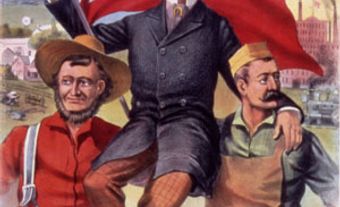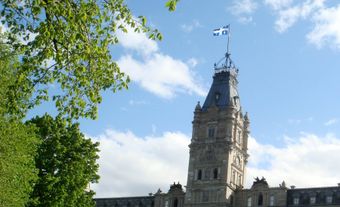A backbencher is a member of Parliament (MP) or of a provincial or territorial legislature who is in neither the governing cabinet nor the oppositions’ shadow cabinets. Backbenchers occupy seats in the back of the legislature, behind the cabinet and shadow cabinets. (The name derives from the British parliament, where they sit on benches.) Like all MPs, backbenchers represent their constituents. They participate in debates and in question period, serve on committees, and bring private member’s bills to the House. Above all, backbenchers are expected to support their party and its leader.

Background
A government is formed by the party that wins the most seats in a federal election. That party’s MPs occupy the seats to the right of the Speaker in the House of Commons. The prime minister and cabinet sit in the front seats at the centre. The MPs from the other parties occupy seats to the Speaker’s left. The MPs in all the opposition parties’ shadow cabinets sit in the front seats on the opposition side. MPs of all parties who are not in the cabinet or shadow cabinets — the backbenchers — sit at desks behind them, near the back of the House.
Role and Purpose
Like all MPs, backbenchers are elected to represent their constituents. They have an office in their home riding and another in Ottawa. Since they do not devote most of their time to a specific portfolio, as cabinet members and members of shadow cabinets do, they are better suited to respond to more generalized issues or concerns.
Backbenchers participate in debates in the House of Commons. They can make statements and pose questions in question period. They can bring private member’s bills to the House and are assigned to committees, where much of the work is done to shape bills into law.

Finally, backbenchers are members of a party caucus. A caucus comprises all the elected members of the same party and can also include party members from the Senate. Backbenchers are free to speak their minds in weekly caucus meetings, where issues of the day are discussed. But outside of caucus, they are expected to always support their leader and party and to always vote with their party, except on rare occasions where a party allows a free vote. To publicly criticize the party or leader, or to break from the party in a vote, usually results in a backbencher resigning from the party, joining another, or sitting as an independent. In this way, backbenchers represent their constituents’ interests to their party and their party’s interests to their constituents.
In the Provinces and Territories
All 10 provincial legislatures and that of Yukon are organized in the much the same way as the federal government. The Northwest Territories and Nunavut, however, both have a consensus style of government. There are no political parties and therefore no backbenchers. Instead, they choose their premier and cabinet from among elected members, who all sit together.
See also Canadian Party System; Leader of the Opposition.

 Share on Facebook
Share on Facebook Share on X
Share on X Share by Email
Share by Email Share on Google Classroom
Share on Google Classroom

.jpg)
